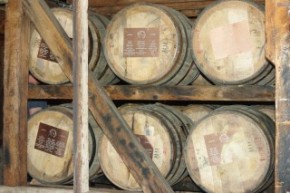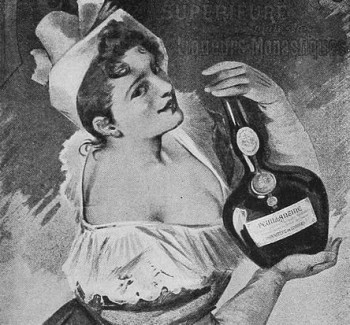"Copper" on BBC America
by Luke Hopping

Content series are produced in partnership with our sponsors. This edition of “19th Century Libations” is brought to you by “Copper” on BBC America.
BBC America’s Copper is a police drama set during the Civil War in New York City — where the beat patrolled ranges from the Five Points up to luxurious Fifth Avenue and all the way into rural northern Manhattan. As any student knows, 19th century New York was one hard-drinking, hard living place to be. Since the premiere of “Copper” is fast approaching, here is everything you’d want to know about America’s sordid relationship with alcohol during that blurry-eyed era.
Popular portrayals of liquor in the 19th century conjure images of whiskey bottles labeled with X’s and inebriated shootouts, but they overlook the more pervasive drinking problems that plagued America’s cities — and the working poor and immigrants who lived there. Daniel Okrent, author of Last Call: The Rise and Fall of Prohibition, noted that 19th century drinking patterns were roughly triple our own. That figure becomes all the more startling when you take into account the drunken renaissance our country is currently undergoing (a recent Gallup Poll found the drinking rate is the highest it has been since the mid-1980s, when drinking ages across the nation were inflated to keep intoxicated teens off the road). Without excluding children, the elderly, or any other group adverse to imbibing, the average American still consumed a gag-inducing 3.9 gallons of alcohol annually in 1830.
One can only imagine what a drinker in their prime must have been putting down. Furthermore, almost no segment of society was excluded from the merriment; during the Civil War, certain branches of the military were provided alcohol rations, for curative, as well as morale-boosting, purposes. Picture a world in which, odds on, everyone you met in a given day was at least a little tipsy, and, at the end of four years, you didn’t have to graduate and get a job. You do die of liver failure at 58, though.

But while the drinks may have been stronger and the parties crazier, so was the opposition. In 1854, when New York Governor Horatio Seymour vetoed a bill that would have prohibited the sale of liquor, he was promptly replaced at the ballot by dry candidate Myron H. Clark. Within months of Clark’s inauguration, the sale of liquor was outlawed in the Empire State. All told, twelve states enacted prohibitory alcohol laws in the lead-up to the Civil War. (The actual extent to which these bans were enforced, however, is unclear.) Still, alcohol consumption fluctuated violently. From its peak in 1830, drinking fell to an all-time low in popularity just fifteen years later. Much like individuals who drink excessively today, America seems to have spent most of the century in a cycle of binge and regret. While teetotalers would have to wait until 1919 for their brief moment in the sun, it was evident they were on the march at least a century earlier.
Yet, in spite of the protestations of a zealous minority, drinking remained shockingly inescapable at the onset of “Mr. Lincoln’s War,” as it was pejoratively called, particularly in inner cities. We’re betting the incredible focus on booze seeps into “Copper” depiction of crime in New York’s slums, when it arrives on August 19th. It’s hard to imagine how it won’t.
This content was created for our sponsor Copper on BBC America.
